Autumn in the Spanish Pyrenees feels like stepping right into a painting. Ordesa Valley, honestly, just steals the show.
As I hiked through the forest, golden leaves rained down on the path. Brilliant crimson trees lit up the slopes all around me.
The colors looked so vivid, I almost couldn’t believe it. They popped against the rugged mountains and that deep blue sky.
Leaves crunched under my boots. The crisp air—there’s nothing quite like it at this altitude in fall.
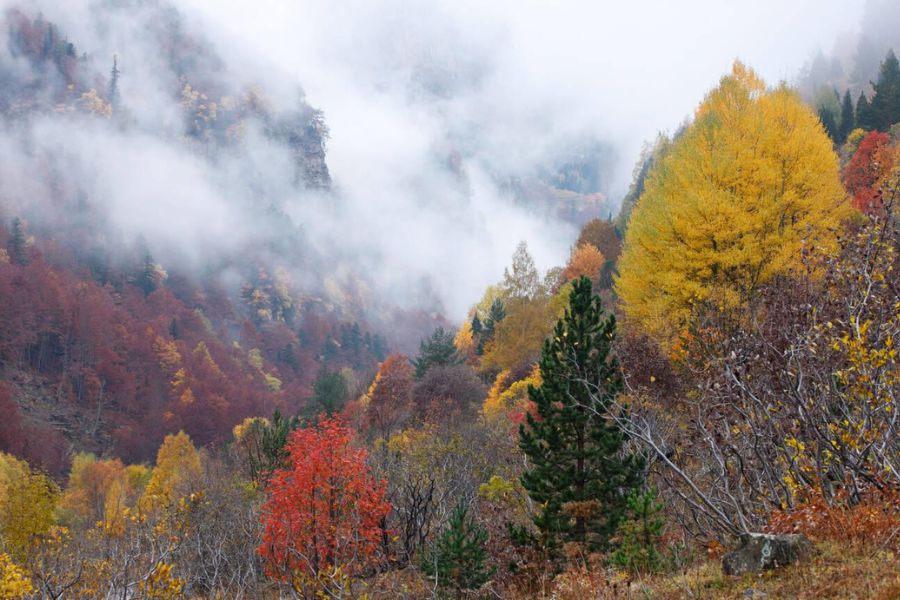
Ordesa National Park’s scenery isn’t just pretty. I’d call it unforgettable—a real showcase of Spain’s wild side this time of year.
If you’ve ever dreamed of wandering through a forest blazing with autumn hues, this corner of the Pyrenees delivers views you really have to see for yourself.
The Magic of Ordesa in Autumn
Autumn in Ordesa Valley is pure sensory overload. Crisp air, golden hillsides, and bursts of deep red make every step feel like you’re walking through a living painting.
The Pyrenean landscape feels untouched. Every path brings some new surprise.
Fall Foliage: Nature’s Masterpiece
When autumn hits Ordesa, the forest just transforms. Beech, maple, and rowan trees show off gold, crimson, and orange leaves.
The whole place glows. Every turn gives you something new—maybe a carpet of leaves, maybe a glimpse of snow on the peaks above.
I kept stopping to soak in those vivid colors reflected in the streams and waterfalls. Every leaf seemed to tell a bit of the valley’s story.
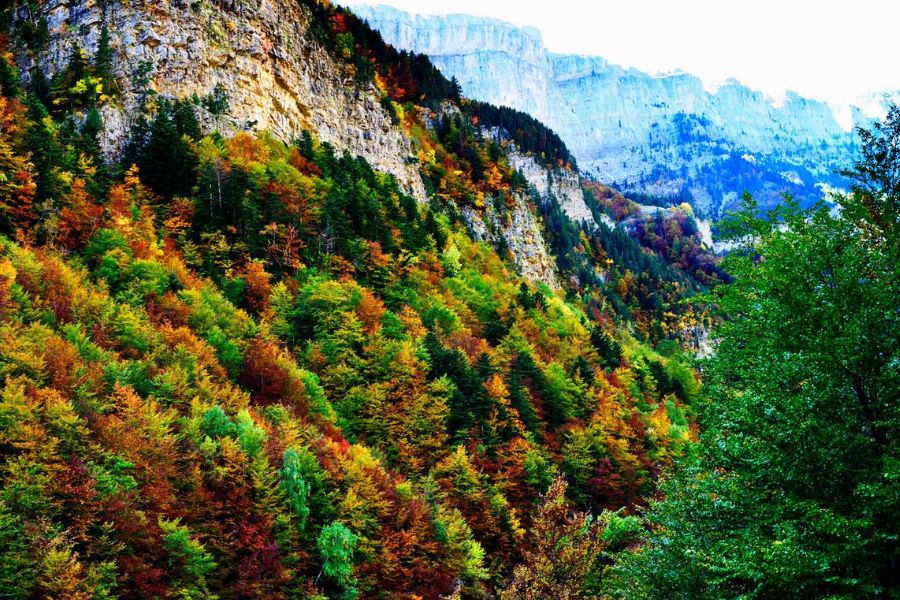
This wasn’t just a walk in the woods. It felt like nature’s own art show.
I’ve hiked in Rioja and other parts of Spain, but honestly, nothing matched the bold colors in Ordesa.
Best Time to Experience Autumn Colors
From what I’ve seen, late September to early November is the sweet spot for autumn colors in Ordesa. Early October usually brings the brightest beech forests and that perfect hiking weather.
The weather can flip fast up here, so I always pack layers and waterproofs. Days get short, so I start early to catch all the daylight.
Local guides and visitor centers help with trail updates and the latest color changes. Some years, the leaves stick around longer, but shooting for late September through mid-October usually means you’ll catch the classic autumn look.
Why Ordesa is a Must-Visit in the Pyrenees
Spain has plenty of spots for fall colors, but Ordesa just stands out. The steep cliffs, roaring waterfalls, and thick forests make a dramatic backdrop that’s tough to beat.
Walking these woods, I felt connected to the past—couldn’t help but wonder how explorers like Andres saw these trails centuries ago.
Wildlife in Ordesa is just as impressive. I spotted birds overhead and sometimes glimpsed chamois on the rocky slopes.
The wildness and peace combined to make every moment feel special. It’s rare to find forests that still feel this untouched.
Ordesa feels like it’s a world away from busy cities or the vineyards of Rioja. If you crave quiet, color, and big landscapes, autumn in Ordesa Valley is something you’ll remember for life.
Planning the Perfect Hike in Ordesa National Park
Autumn brings a patchwork of gold, amber, and crimson to Ordesa National Park. Picking the right trail, finding the best scenic spots, and matching the hike to your pace makes the whole adventure even better.
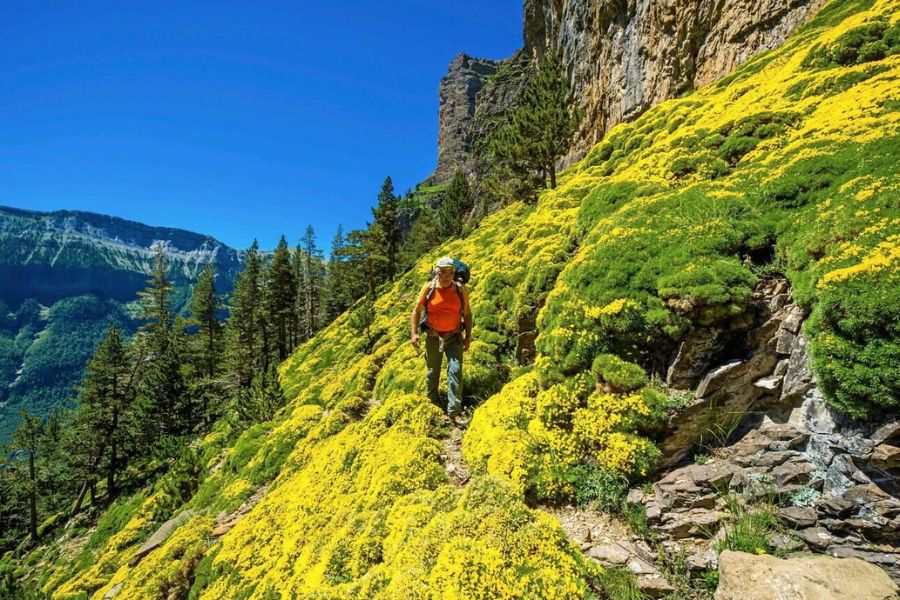
Iconic Hiking Trails for Autumn Colors
When I mapped out my hike, the Circo de Soaso trail jumped out first. This one’s famous for the Cola de Caballo waterfall at the end—about 10.5 miles round-trip.
Every step takes you under beech and maple trees that turn fiery red and bright yellow by mid-October.
Another favorite? The Faja de Pelay. This higher trail gives you sweeping views over the whole Ordesa Valley.
Looking down, I saw forests painted with autumn colors that looked almost unreal.
Shorter walks, like the Gradas de Soaso, work well if you’re new to mountain hiking or just short on time. Most trails are well-marked and welcome both walkers and bikers, so it’s easy to find one that fits your mood.
Scenic Route Highlights
Some spots along the routes really shine in autumn light. The Pradera de Ordesa meadow, right at the valley’s entrance, becomes a golden field surrounded by red and orange forests.
Sometimes, early morning fog swirls at your feet, making the place feel almost enchanted.
Climb higher and you’ll reach the Mirador de Calcilarruego, which overlooks the whole valley in full autumn glory. Taking a break here felt like stepping into a postcard.
The cliffs and distant waterfalls add a wild soundtrack to the hush of falling leaves.
My favorite part? Crossing wooden bridges over icy blue streams, with leaves swirling in gentle eddies. Those little details—the light on water, the quiet of the forest—stick with me long after the hike ends.
Itineraries for Every Adventurer
Figuring out where to start and finish the day depends on what you’re after. For a classic Ordesa day hike, I like to set off early from Torla, follow the main route to Cola de Caballo, and take my time at the lookouts and photo spots.
If you want a multi-day adventure, you can book a mountain hut like Refugio de Góriz. This opens up longer hikes to Monte Perdido or even into France for a deeper Pyrenean trek.
Torla has plenty of places to stay, from cozy guesthouses to small hotels. Some even have bike storage, which is great if you want to mix walking and biking.

Planning ahead meant I had a warm bed and good food waiting for me after long days on the trail.
Immersive Experiences Along the Trail
Ordesa in autumn turns a simple hike into something much bigger. Sparkling lakes, bursts of wildlife, and colors so bright they almost don’t seem real.
Crisp air, rushing rivers, and that autumn thrill make every step count.
Picturesque Lakes and Rivers
Walking the trail, the first thing I noticed was the clear blue surface of Lake Marboré. It reflected golden beeches and crimson maples, making the water look almost painted.
Little streams fed into the lake, winding through moss and fallen leaves.
The Arazas River runs right through the heart of Ordesa Valley, and it’s louder in autumn. Meltwater picks up speed, tumbling over rocks and sending up a fine mist.
I paused on wooden bridges, watching leaves swirl in the current and listening to the soft rush. The riverbanks glowed with red and yellow carpets as the sun lit up the changing leaves.
Fallen trees and smooth stones made perfect spots to rest or snack. The calm by these lakes and rivers made me want to linger, just soaking up the colors.
Wildlife Encounters in Fall
Ordesa’s forests have a lot more than just trees going on. I didn’t see monkeys or peccaries—those belong in the Amazon—but the Pyrenean wildlife left plenty of signs.
Squirrels darted across the trail, busy gathering food for winter. I caught a herd of chamois, those wild mountain goats, watching from a rocky ledge.
Birds got especially active in the cool autumn air. Jays called to each other, flashing blue wings against orange leaves.
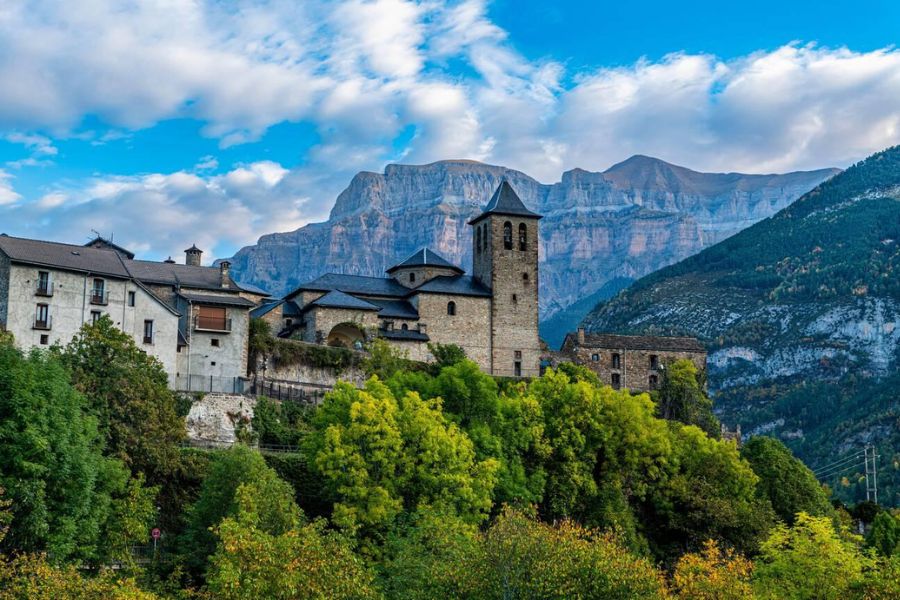
Sometimes a fox slipped quietly between the tree trunks, searching for fallen fruit. The undergrowth rustled with life.
Most animals kept hidden, but if you’re patient and keep your eyes open, you’ll spot movement just off the trail. Fall makes the forest feel more alive, with every sound sharper on the crisp leaf carpet.
Capturing the Vibrant Scenery
I snapped hundreds of photos and still felt like I couldn’t capture it all. Every turn had a new view—a wide valley framed by copper trees, or a cascade under a crimson canopy.
Autumn light, especially right after sunrise or just before sunset, brought out the richest colors. My best shots always seemed to happen in those moments.
I learned to keep my camera ready, since the light and shadows changed fast.
If you’re visiting:
- Use lakes and rivers for dramatic reflections in your photos.
- Bring extra batteries; the cold drains them quickly.
- Remember to put the camera down sometimes and just take it all in.
Ordesa in autumn really offers moments worth remembering—and sharing. Each glance felt like proof I was walking through a living, breathing work of art.
Local Culture and Cuisine: Savoring Autumn in the Pyrenees
Autumn in the Pyrenees isn’t only about what you see. Local flavors and traditions turn every trip here into something special.
The region’s food, communal dining, and festive energy make the mountains come alive on chilly fall days.
Traditional Food and Wine
After hours in the crisp forest, the smell of wood smoke and simmering stews always pulls me toward the nearest village.
In Ordesa and the wider Pyrenees, hearty dishes take over as the weather cools.
Locals love cordero asado (roast lamb), migas (fried breadcrumbs with sausage), and thick gazpacho aragonés. I always look forward to truchas a la navarra—fresh Pyrenean trout, simply grilled.
Wine takes center stage, especially bold reds from Somontano. Sharing a jug of local red or fruity sangria is part of the fun.

For dessert, nothing beats chocolatada (hot chocolate) or panellets—sweet almond treats that pop up in autumn. Food here is all about comfort, tradition, and sharing.
Dining Experiences After the Hike
Evenings after a hike, I love settling into a family-run casa rural or a rustic inn. There’s just something about eating around a busy, communal table that makes everything taste better.
Simple plates of tapas—cured ham, local cheeses, olives—set the stage for heartier fare. Locals invite hikers and travelers to join in, whether it’s at a long table or beside a roaring fire.
Menus change with the season. Fall brings mushrooms foraged from the hills, showing up in omelets and stews. Regional dishes like paella de montaña (mountain paella) and big bowls of vegetable soup round things out.
With every bite, I feel the warmth and welcome of the Pyrenean people.
Festivals and Local Customs
Autumn is festival season in the Pyrenees, and visitors are always welcome at these traditional events.
One of my favorites is the Feria de Otoño in Broto. Farmers’ markets fill the streets with the aroma of grilled meats and sweet pastries.
People come together to celebrate the harvest, taste new wines, and enjoy music. I once joined a little chestnut-roasting festival in a mountain village. Locals handed out castañas asadas (roasted chestnuts) and sang folk songs late into the night.
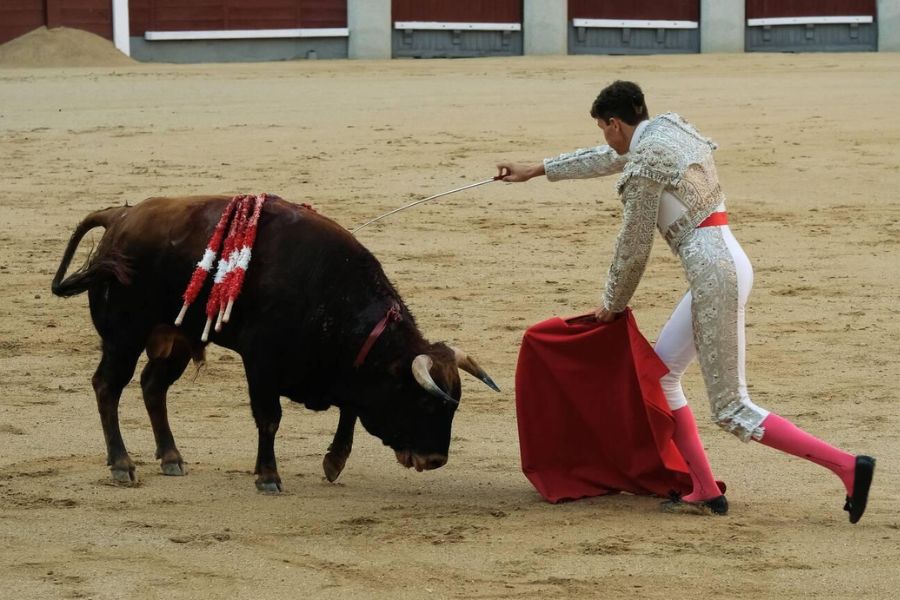
Customs here mix Spanish and French influences—from dantzaris (traditional dancers) to grape-stomping in local wineries. Joining in—whether eating, toasting, or dancing—made me feel like I truly belonged in the Pyrenees.
Practical Tips for an Unforgettable Autumn Hike
When I planned ahead for Ordesa, everything just felt easier. Good lodging, a solid budget, and packing the right gear really changed my whole experience. Wandering through the nearby towns added a lot, too.
Where to Stay: Accommodations
I spotted all kinds of places near Ordesa y Monte Perdido National Park. There were cozy guesthouses in Torla, plus a few boutique hotels in Broto. Torla sits right by the park’s main entrance, so it’s a super convenient base.
Most of those family-run hostels served breakfast, which honestly made those chilly mornings a lot better.
Popular options:
| Accommodation Type | Average Price/Night | Features |
|---|---|---|
| Guesthouse | €40-€70 | Friendly hosts, local meals |
| Small Hotel | €60-€120 | Private rooms, more amenities |
| Campsite | €10-€30 | Budget friendly, outdoor vibe |
If you’re heading there in autumn, book early—leaf-peeping season draws a crowd. Some hotels let you stash your luggage, which is a lifesaver if you want to do multi-day hikes.
Currency and Budgeting Advice
Spain runs on the euro (€). I found cash super useful for little shops in Ordesa and the nearby villages, since not every place takes cards.
I always carried enough for meals, bus fares, and, well, the occasional bakery splurge.
I kept track of my spending in a notebook. That helped me avoid any surprises.
A typical autumn day costs about:
- Meals: €15–€30
- Accommodation: €15–€120 (from camping to comfortable hotels)
- Park buses/taxis: €4–€15
You’ll find ATMs in Torla and Broto, but they sometimes run out of cash, especially on weekends. I just withdrew what I needed ahead of time.

Packing Essentials for Changing Weather
Autumn in the Pyrenees keeps you guessing—sunshine one minute, rain or even snow the next. Layering saved me. I packed a moisture-wicking base layer, a light fleece, a waterproof jacket, plus a warm hat and gloves.
Here’s what I wouldn’t hike without:
- Sturdy waterproof boots
- Extra socks
- Rain cover for my backpack
- Snacks and a thermos
- Headlamp (days get short)
- Map or a pre-downloaded trail app
I also brought sunscreen and sunglasses. The sun can still be intense at altitude. A reusable water bottle made sense—some trails had fountains for refills.
Local Sightseeing and Shopping
After hiking, I wandered through the cobbled streets of Torla. Artisan shops sold handwoven scarves, local cheeses, and wood carvings.
On weekends, small food markets popped up—perfect if you want to grab picnic supplies. I loved how easy it felt to just browse and chat with the vendors.
Some days, I checked out the nearby towns of Broto and Aínsa. Both towns have medieval squares and little museums that are honestly worth a quick stop.
Local stores take both cash and cards. Out in the country, though, tiny produce stands really just want euros.
For souvenirs, I grabbed a jar of mountain honey and a few postcards to remember my autumn hike. Shopping and sightseeing here never feel rushed; everyone’s genuinely welcoming, which makes it easy to slow down and enjoy.

